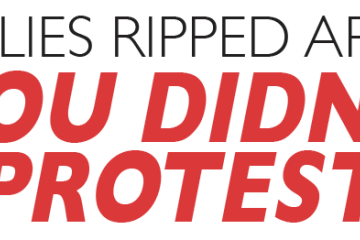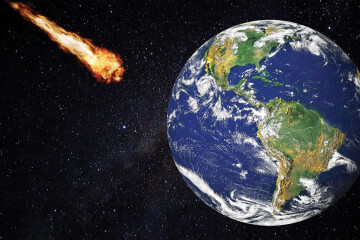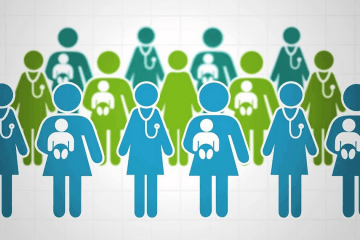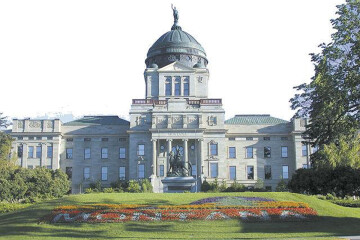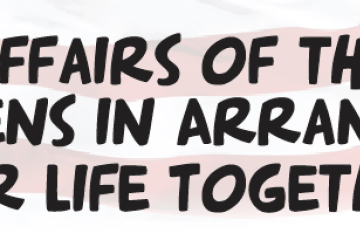What's Your Beef? What Went Wrong And Why Aren’t We Fixing It?
As summer nears its end, families normally would be preparing their children for the start of the school year. This year, however, parents everywhere have been left wondering what this will look like, and more importantly, will it be safe. Bozeman is no exception. In fact, if you are following recent data, all signs currently point to the need for Montana’s schools to remain with remote learning (New York Times, August 14, 2020). Yet, the federal government has declared that schools must open this fall, or they risk losing crucial funding. This has only made school opening plans more difficult.
With little to no federal (or state) guidance on how to make in-school learning a reality, local districts are left to figure out how to best serve their communities. At the eleventh hour, Governor Bullock announced that everyone in public and private K-12 school buildings must wear masks. However, little else has been established to ensure the safety of our children, teachers, school staff, families, and the community should school buildings open. Not only has there been a lack of coherent and cohesive plans from the federal government to fight this pandemic, but the misinformation circulated by the leaders of this country has also created a great divide among its citizens. COVID19, the disease caused by the novel coronavirus, is not just a nasty flu. Back to School Cleaning Kit for MSU Staff
Back to School Cleaning Kit for MSU Staff
Claims that children do not get sick and that they do not spread the virus are nothing more than dangerous myths. While most children may not experience some of the extreme health consequences that have claimed the lives of over 171,000 Americans, some have gotten very ill (and died). In July and August, there was a tremendous nationwide increase in the number of children testing positive for COVID19, often due to their participation in community activities (such as camps). We also know that children spread the virus.
That aside, even if it were true that children don’t get sick (they do) and they don’t spread the virus (they do), one has to wonder exactly how that translates to it being safe for schools to be open. Who will be in the school buildings with all these children? Why aren’t we discussing the safety of the many adults that are required in schools every day? Some of these adults may be in high-risk groups or have medically vulnerable family members. They will be put at greater risk if forced to return to the school building; or worse, if accommodations cannot be made, some may be forced to take leave or even resign from their jobs, which brings with it the loss of much needed medical insurance.
Still, despite it being the most unsafe option, parents across Bozeman are fighting to have their children in school full time because they need to work and lack childcare resources. This dilemma is being faced in communities all over the country. There are several facts that we cannot disregard:
There is no debate necessary that many families have parents that need to work full time, many are single-parent families, and some parents cannot facilitate distance learning for a myriad of reasons.
Few would disagree that the emergency learning that occurred in the spring was not optimal for many families.
We know that schools provide very critical services to many children. Whether physically, emotionally, and/or educationally, school closures have had negative effects on some of the most vulnerable students. Schools need to be open, on some level, in some way.
With the current exponential spread of COVID19 in Montana, it is not safe for schools to open for everyone with full-time learning; and in some areas, hybrid/blended plans are not advisable.
However, though the first three statements are true, they do not negate the last. It is not safe for schools to open in some communities. The issue of saving the economy and supporting working parents was never a school district’s problem or failure. This is a government failure. If this is not realized, unwise decisions may be made that, whether the plan works for a week or a month….it may end with unnecessary damage! We already know that schools around the world and across this country have closed shortly after reopening. Is there a reason that we are not learning from these experiences?
Currently, there are no magic answers. Our children need more and need better. What that looks like is a big question that is not being openly addressed at the school district level. There are very real concerns about our children’s mental health and wellbeing. The notion that the only way to have these needs met is by children being in school is a fallacy. When schools open this year, if it is done properly, following appropriate guidance to mitigate as much risk as possible, it will not look anything like the school days that our children are craving. That need for social connection and engagement will be hard found in the school buildings with physical distancing and other rules in place. Are we asking if these socio-emotional needs can be met more safely and in better ways outside of the school building, while families are using the remote learning option? Families across Bozeman are left seeking ways to come together, not only to support each other with the remote learning plan but in finding ways to meet our children’s socio-emotional needs. Many have asked for the district’s help with this, but requests seem to have fallen on deaf ears, as they work in haste to finalize their plans.
The sad truth is…there may not be winners this school year. No plan is perfect, children will miss out on some things that they normally would experience, whether they are distance learning or in a modified in-school program. While there are no clear winners here this academic year...if we do not make the best decisions we can, with the information and tools we have, there will be definite losers (loss).
With so many unknowns about COVID19 (and the long-term health consequences), why are we ignoring what we do know? Before the CDC became a vehicle for political misrepresentation and not the most credible source of scientifically based information, they were consistent and firm in their guidelines regarding the opening of schools. Their guidance was also clear that large groups of people inside buildings is a more dangerous environment and that limiting close contact with multiple people would help mitigate more risk. Traditional classroom learning is the antithesis of what is safest because having many students and adults in a classroom inside buildings with questionable HVAC systems is not the way to mitigate risk.
Though all signs pointed to the rapid, exponential spread of COVID19 in Montana, by early August, BSD7 had no viable plan in place for the beginning of the 2020-2021 school year. While this may be another result of the poor overall leadership from the top-down, the lack of awareness that much more action needed to be taken and decided upon well before August is concerning. Notwithstanding claims that over 85% of Bozeman parents surveyed wanted in-person learning, there was little discussion about the poorly worded survey questions. Of course, parents want their children back in school and teachers want to be in the classroom teaching…but there is a second part of that sentence that is being ignored: we want that if/when it can be done safely. To suggest that children and teachers return to school full time in pre-COVID19 conditions so that parents can work is ludicrous and might be tantamount to saying the dollar is more important than human lives! While this did not start as the school district’s failure, the consequences from the absence of better planning may fall on the district.
Parents have not been provided with better plans, and in some cases, many have no sustainable options. Why was it mid-August when the BSD7 Trustees were first voting to purchase a new learning management system? The district knew that families with medically vulnerable students (or family members) would need a remote learning plan. The district did not capitalize on an opportunity (time!) to make the remote learning option accessible and appealing to more families. The district could have rolled out the red carpet to encourage more families to support this option (which is known to be the safest for the many). Instead, very little was done to reassure parents that this option would be better than the emergency learning that was experienced in the spring or that it would be a feasible and manageable option that could work. Parents were given very little information and then asked to make mostly uninformed decisions. We know that if more families choose this option, it will be safer for those that must return to the classroom. They could have planned better to support more families. Instead of no child home alone and no parents on their own, Bozeman families are now facing that reality.
BSD7 missed a chance to engage in a safer and equitable long-term plan that could have worked for the many, instead of now providing an option that works for the few. There are many possibilities that the district never mentioned in their few sparse emails in early summer, nor were they discussed or offered as options in the board meetings.
The current BSD7 plan is to be reactive, not proactive. Thus, if/when schools are forced to close and all students return to remote learning, they risk children and their families again being traumatized, as many were in the spring. Additionally, those that once saw their school as a safe place may feel differently when their classmates and teachers are sick or when they need to quarantine for 10 or more days. This is not a far-fetched prediction. Because Montana has limited resources, including the inability to test large numbers of people and provide quick test results, this is a likely scenario.
Imagine what could have happened if the majority of families accessed the remote learning option and BSD7 would have been able to safely open some of its schools on a more full-time basis for those students that most need critical in-school services (while also providing full-time education for the children of our frontline and essential workers). Some students could have had 4 days of in-school learning, while a 5th day could have been used by remote learners who need access to in-school support and/or services. If enough families chose the remote learning option, possibly the district would only need to use some school buildings for full-time learning, and they could have reserved one or two schools for providing critical services and support for the remote learners, on an as needed basis. There are many options they could have chosen sooner, which may have given the district the time need to work more closely with community agencies that could provide additional support that families might need (such as child care or tutoring). They could have partnered with local internet providers to bring service to those that need it in their homes. Many of these actions might have gone a long way in bridging some of the equity gap, allowing more families to have the tools they would need to access the remote learning option. In supporting more remote learners and their families, it could have allowed for the safe opening of some schools. This also could have benefitted one of our more treasured resources: our teachers and school staff. There may not be enough children enrolling in the remote option to support the number of teachers (and staff) that need to teach remotely. Their requests for accommodations may go unfulfilled and they may be left at great risk.
Now, think about how different September 8, 2020, would look like if BSD7 had worked to engage the community to support its families, so that remote learning became an achievable plan that could work? Instead, school buildings will open to more children than necessary, and in ways that may prove dangerous and unsafe. The experience in schools will not be anything near the normal that our children are missing because that is impossible right now. Families have scrambled to make plans for childcare for the three remote learning days in the hybrid plan because the district did not actively participate in helping with that issue. While new camps and daycares will step in to fill the gap, this solution, unless very well coordinated, may negate many of the benefits of the hybrid learning plan: if children are mixed with different cohorts on the days they aren’t in school, they will have more exposure and then there is an increased risk of an outbreak in our schools and community. The outcome of this is likely the inevitable forced closing of schools again and a return to 100% remote learning for all.
Families in the Bozeman community have not been set up for success; the school district has left us facing possible failure, on more than one front. What was once a government failure will now become a local school district failure. And this will be played out all over the country.
BSD7 had the opportunity to do this differently. It will be a sad day if/when the results of misguided choices come to fruition.
We can still do this. Please reach out if you need assistance accessing local resources!
No child home alone, no parents on their own!
Keri M. Zwerner, MA, LCPC is a private practice counselor in Bozeman and Livingston, MT.
